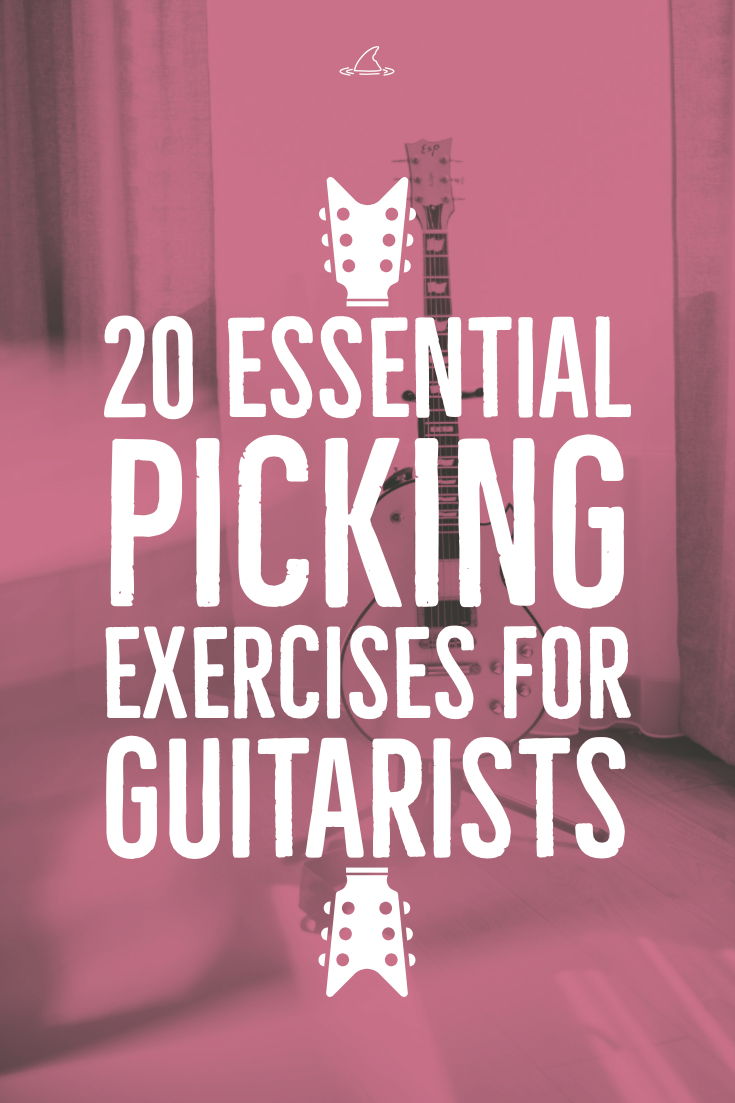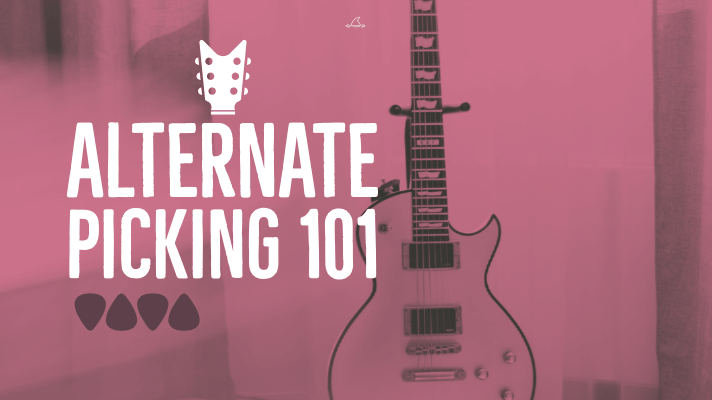Alternate picking for guitarists may seem like something we all take for granted. Most guitarists, even complete beginners alternate some down and up strokes naturally whether they are consciously doing it or not. How to hold a guitar pick is equally important too.
As we develop our picking hand, alternate picking can open a whole new world of techniques and music not obtainable otherwise. Even if you’re familiar with alternate picking, it can often be helpful to go back and work on the basics.
Sometimes I find myself in a rut, or maybe too many gigs in any given month has let my picking hand get a little lazy. It’s times like these when I like to take a few hours in my guitar practice routine and slowly get back to the basics and really tighten it all up.
When my picking is really happening.. everything just feels better. My solo improvisations are clear and articulate, my rhythms are effortless and I’m able to do more on the guitar with less effort. Whether I’m playing Thrash Metal, Funk, or a Latin acoustic tune, everything sounds better when my alternate picking is developed to a high level… but it requires some maintenance.

I’d also make the argument that alternate picking just sounds better than other techniques. You may be able to develop more speed with economy picking, sweeping, hybrid etc.. but that staccato percussiveness of alternate picking is music to my ears when done well. I’d also argue that it’s just more practical for more kinds of guitar music.
I was recently asked by some guitarists for a good intermediate lesson. I think this one can benefit everyone. Whether you’re a beginner, Intermediate, or advanced guitarist I hope you’ll find these alternate picking tips and exercises helpful. Take it slow and use a metronome! Let’s get to it!
How To Hold a Guitar Pick
I know it sounds simple, but it’s a question I get a lot from students and even other Pro guitar players: How do you hold a pick on guitar? Or if you’re old-school or overseas, how do you hold a plectrum guitar?
I think the above picture (that’s me!) illustrates a good angle for the pick. How you hold a guitar pick can also change depending on what style of music you’re playing. If you’re a Metal player who wants tighter rhythm picking, you may favor a tight picking grip and heavy gauge picks.
On the other hand, a funk or acoustic strummer may prefer thin picks and very loose grip on the guitar pick. This is purely subjective and there’s really no wrong answer here. Take a look at the master himself, AL DiMeola. When you ask how do you hold a guitar pick, why not aim high and check out one of the best picking techniques on the planet.
Alternate Picking 101
For now though, let’s work how to hold the pick and talk about pick directions.
Let’s start on an open string. If you’re a complete beginner, all we’re doing here is alternating down and up picking strokes. At first you may feel more comfortable locking up the wrist and picking more from the arm… that’s OK.
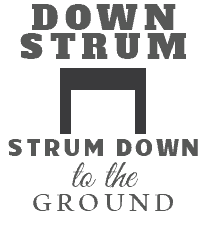

Alternatively, try anchoring the forearm on the bridge of the guitar and just pivoting your wrist. Theres no right or wrong, both methods can produce excellent picking results.
I’ve seen other guitar teachers make the statement that picking from the arm is incorrect. Look, it’s all about the sound. Nobody listening to you cares about your picking technique. Do what works for you! If it sounds good and is comfortable, work with it. Just be consistent.
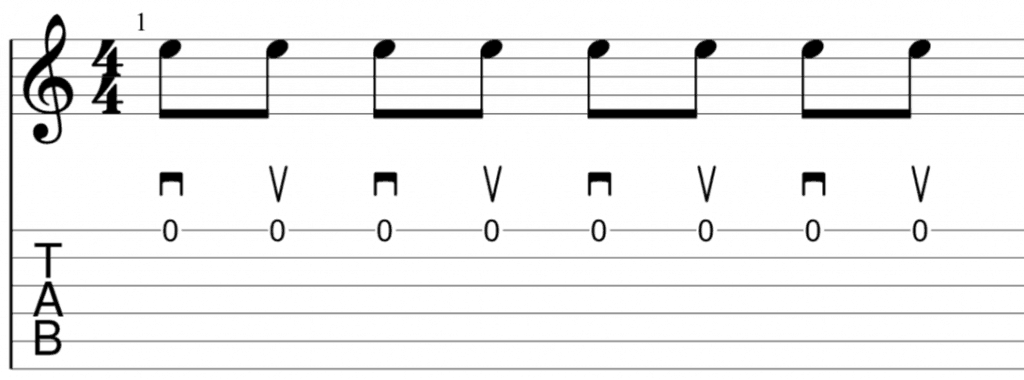
Does this lesson seem too easy for your guitar level? Check out my Advanced Alternate Picking Exercises for guitar.
Guitar Picking Exercises with String Crossing
When we talk about the problems of alternate picking, particularly, string crossing, we need to address inside and outside picking.
Think of two adjacent strings as walls in a corridor. If we stay inside those walls, bouncing inside back and forth, that’s inside picking. Using the example below, an upstroke on the open B string and a downstroke on the open E string.
When outside picking, we start on a downstroke, travel past the top string and return on an upstroke, then travel past the lower string and return on a downstroke. The fundamental technical problem with alternate picking is this extra travel. Both inside and outside picking have this extra wasted movement.

You have to move past a string one way or the other before returning. As we cross more than 2 strings this can be increasingly difficult. It’s worth the effort though as your improvisations, rhythms and chordal picking will become richer as your picking hand develops.
In this example you can see how inside and outside picking work. Give it a try paying close attention to how your picking hand moves across the strings. Make sure your downstrokes and upstrokes sound the same. A weak upstroke takes time to improve, but you’ll get there.
Alternate Picking On 3 Strings
As we move on to 3 string triplets, we have an entirely new set of problems. Any odd grouping of notes will reverse the pick stroke on the repeat. Notice the first triplet starts on a downstroke, then an upstroke when alternate picking.
The second pair, we can switch it up by doing 2 downstrokes and an up. This gives the picking hand a consistent downstroke starting point for each triplet.
We can then reverse it to 2 upstrokes in the last pair.
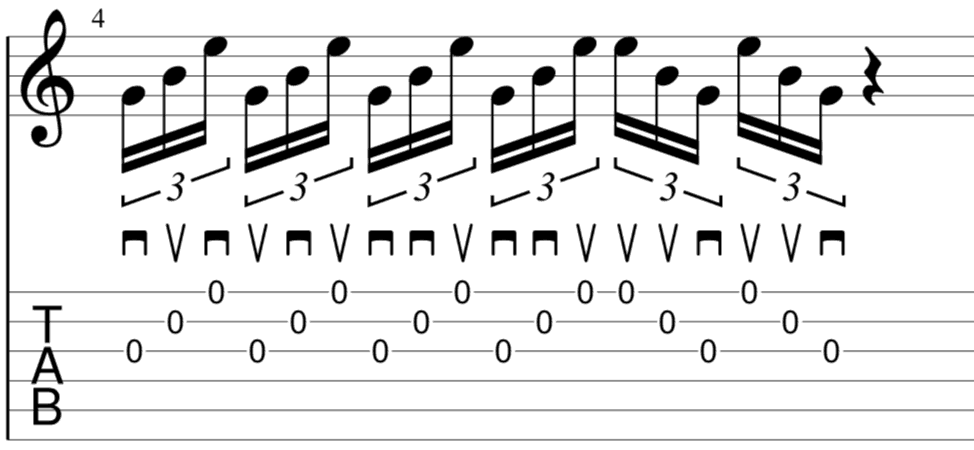
Technically speaking, doing 2 of the same stroke in a row is not alternate picking, however, it is still a useful guitar picking exercise and will help to further develop the picking hand.
Alternate Picking On 4 Strings
Moving on to 4 strings using an open position D Major chord, we’re back to even strokes: DOWN, UP, DOWN, UP. Once you’re comfortable with that, try it in reverse starting on an upstroke.
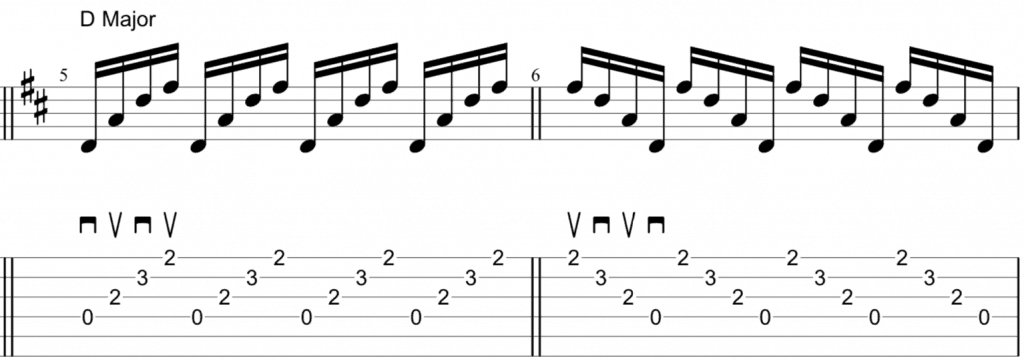
If we alternate pick through the D chord ascending and descending, it looks like this:

Alternate Picking Over 5 Strings
Moving on to 5 string chords using Am in this example. To me, 5 string picking always seems a bit awkward, particularly the downstroke on the high E string. Work slow and make sure each note rings out clearly. How you hold a pick on the guitar when crossing strings really makes a difference here. Try not to let the pick flop around too much in your hand.
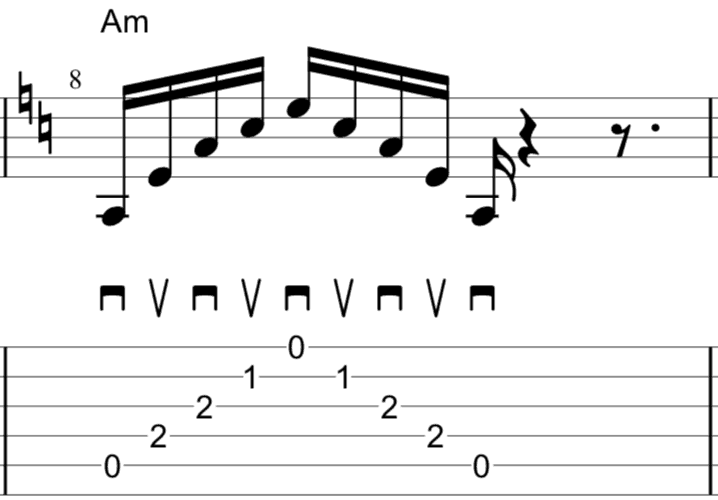
Picking 6 Strings
Lets grab an open position E Major chord for a nice 6 string guitar picking workout. Start with just alternating through the notes then in the last 2 notes of the first bar we’ll change it up to a cool string skipping exercise that emphasizes the outside picking issue.
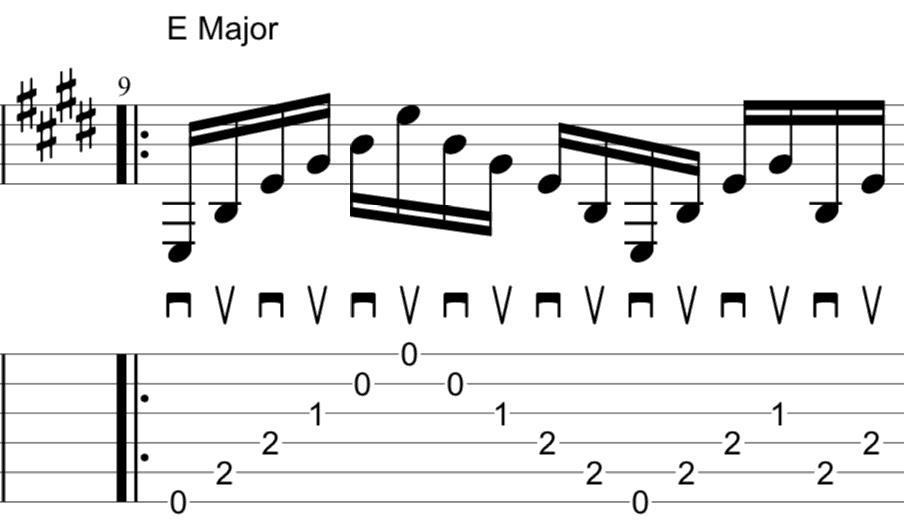
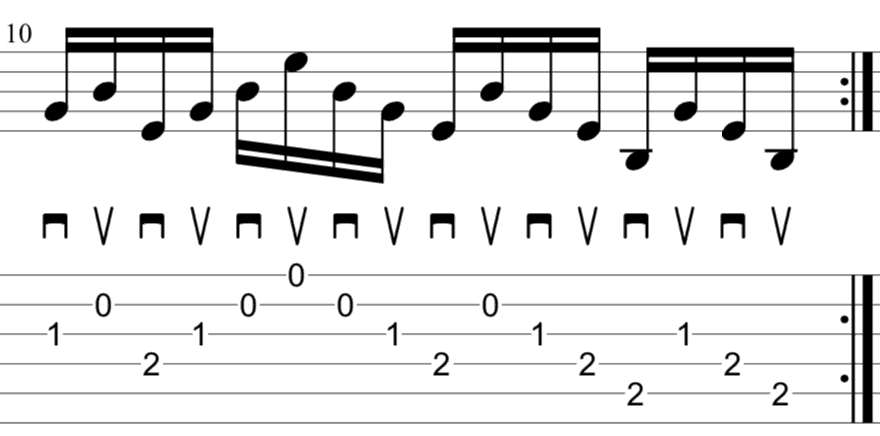
Alternate picking Scale Sequences
If your goal is to eventually get into lead and solo guitar playing and improvising, you’ll definitely want to develop your alternate picking in scale sequences. There are a few problems to address when attempting alternate picking in scales.
- How many notes per string?
- Do the number of notes change from string to string?
- Inside and outside picking that changes in string pairs.
Lets take a look at 2 notes per string in the example below, then mix in 2 and 3 notes per string without stopping.
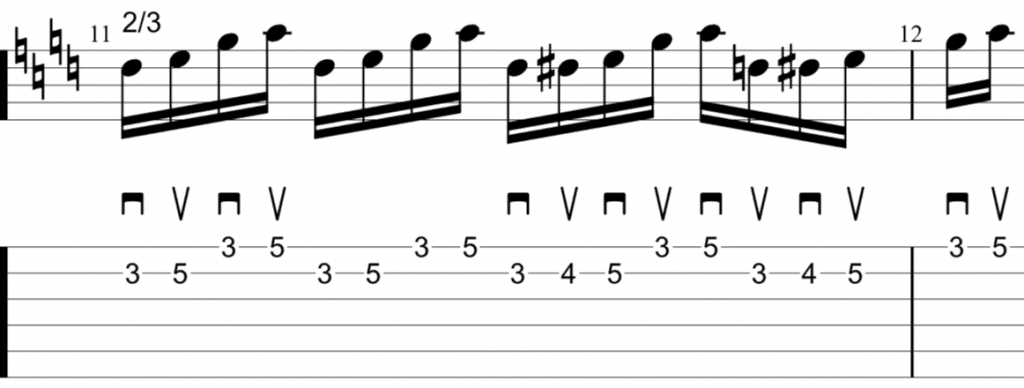
Feels weird right? Throwing in an odd number of notes will completely throw off the picking hand. Work at it slow and try to keep a steady 16th note feel throughout.
Now lets do 3 notes per string and adding 4 notes chromatically on the high E.

Whenever I find myself falling into full shred mode, it can be useful to get away from 3 note per string scales and work on scales that have odd numbers of notes per string to get my alternate picking back into some balance.
If you’re looking for some scales with odd and even numbers of notes to practice try some of these:
Alternate Picking 3 Note Per String Scale Shapes
When alternate picking 3 note per string scale shapes you’ll encounter inside and outside picking in every other pair of adjacent strings. Lets exploit the outside picking and get used to that upstroke when crossing strings.

Notice in bar 2 I’m doubling up the outside string crossing upstroke. This was an exercise made famous by guitar virtuoso and G.I.T. instructor Paul Gilbert in his 1988 video Intense Rock Guitar. If you only work on one alternate picking exercise, make it this is the one!
Once you’re comfortable with example 1, try adding this extended sequence and working it into a loop. Try it with a metronome and build it up slowly.
Advanced Guitar Picking Exercises

In example 2 I’m just tweaking the sequence a bit to cover the complete turnaround both ascending and descending. Once you’re comfortable with them both, wrap them together into one continuous sequence of notes.
You can also hear this exact lick all over early Al DiMeola albums dating back to the early 1970’s. Al and Paul perfected it and its hard to argue with 2 pioneers of alternate picking technique.
Here’s an excerpt of Paul Gilbert doing this same lick (in E minor instead of A). This video is a classic if you’re interested in really taking your picking and overall technique into the stratosphere!
Alternate Picking through a Scale Over 6 Strings
Take this G Major (Ionian) shape and play through it with alternate picking. Pay close attention to where your upstrokes are when crossing strings. The green notes in the graphic below indicate the G Ionian shape, while the black highlights the next diatonic mode, A Dorian.
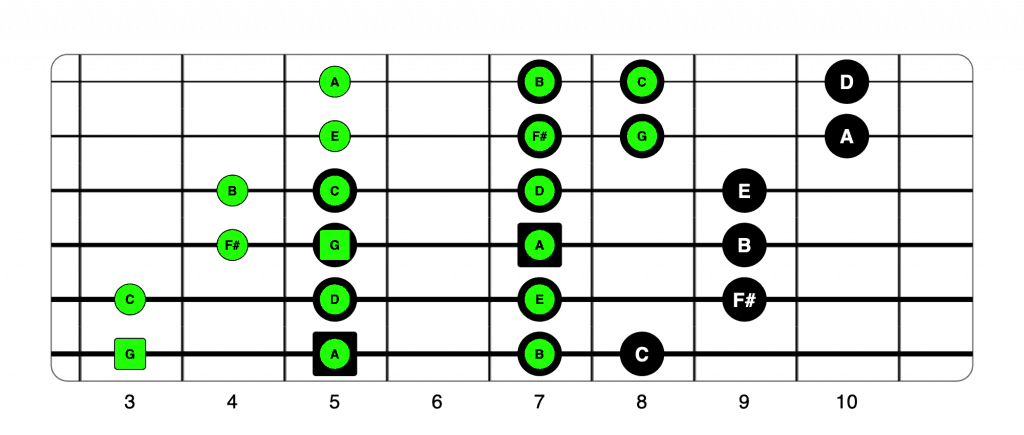

Notice the picking stroke changes every time you switch strings.
In example 2, I’ve pulled out all of the picking symbols except the strokes where a string crossing is required. Give it a try.

I like this last sequence because it focuses on a winding ascension over 4 strings, turns around in the middle and then repeats on the top 4 strings. It takes some of the sting out of moving fluidly over all 6 strings. It also just sounds a little more musical.
Put your metronome on a slow speed and give this one a try until it feels smooth and comfortable.
Dorian Picking Sequence
Now lets take the next mode in G Major, A Dorian, and map it out using the “Up & Back” sequence we did above. If you’re fairly comfortable with doing this on 2 strings, you should be ready to try it through the whole 6 string scale shape.
This is quite a workout and at first can be a bit overwhelming. Once you’ve got it mastered at a slow tempo, bump up that metronome and try it in all 7 modal scales shapes.
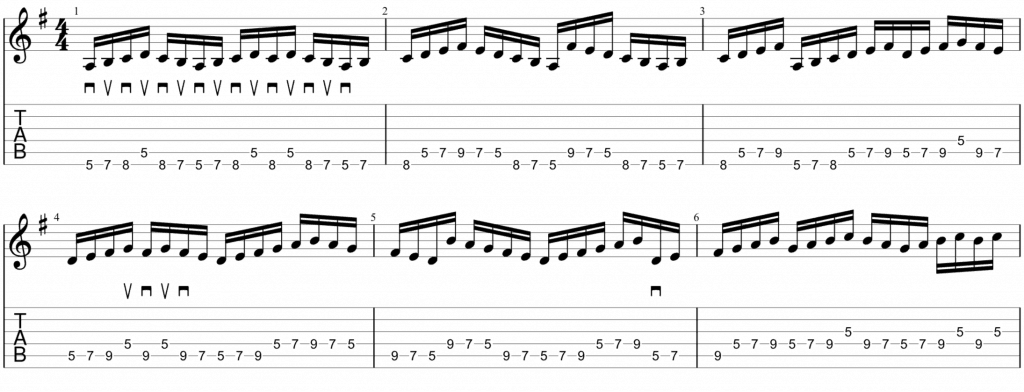
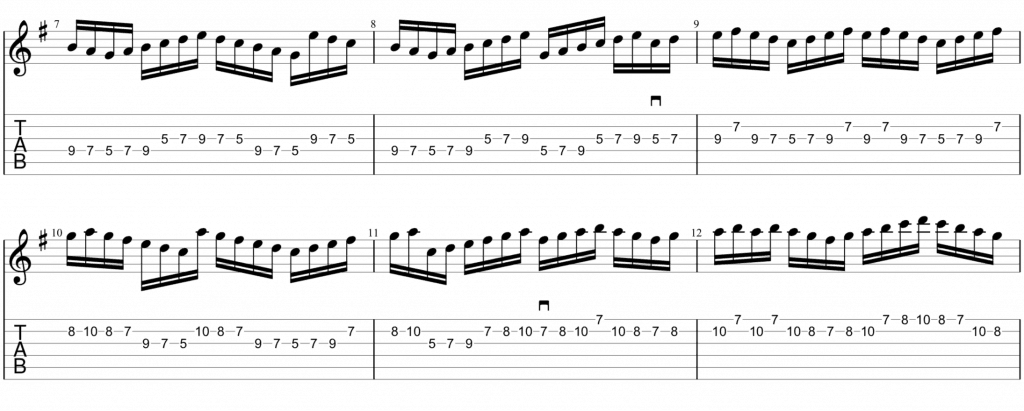

I tabbed out this last sequence for an email reader named George. He had purchased my book, The 7 Day Practice Routine For Guitarists and wanted the “Modal Workout” mapped out in Dorian. Special thanks to George for inspiring this guitar lesson.
Craig Smith is a professional Guitarist, Teacher, and Writer living in Sanford, Florida. Craig has taught guitar lessons, performed 200+ gigs per year for nearly 30 years, and published 4 guitar instructional books. When he’s not gigging or writing, you may find him by the pool with his wife Celeste, 4 Chihuahuas, and a drink. 🎸
